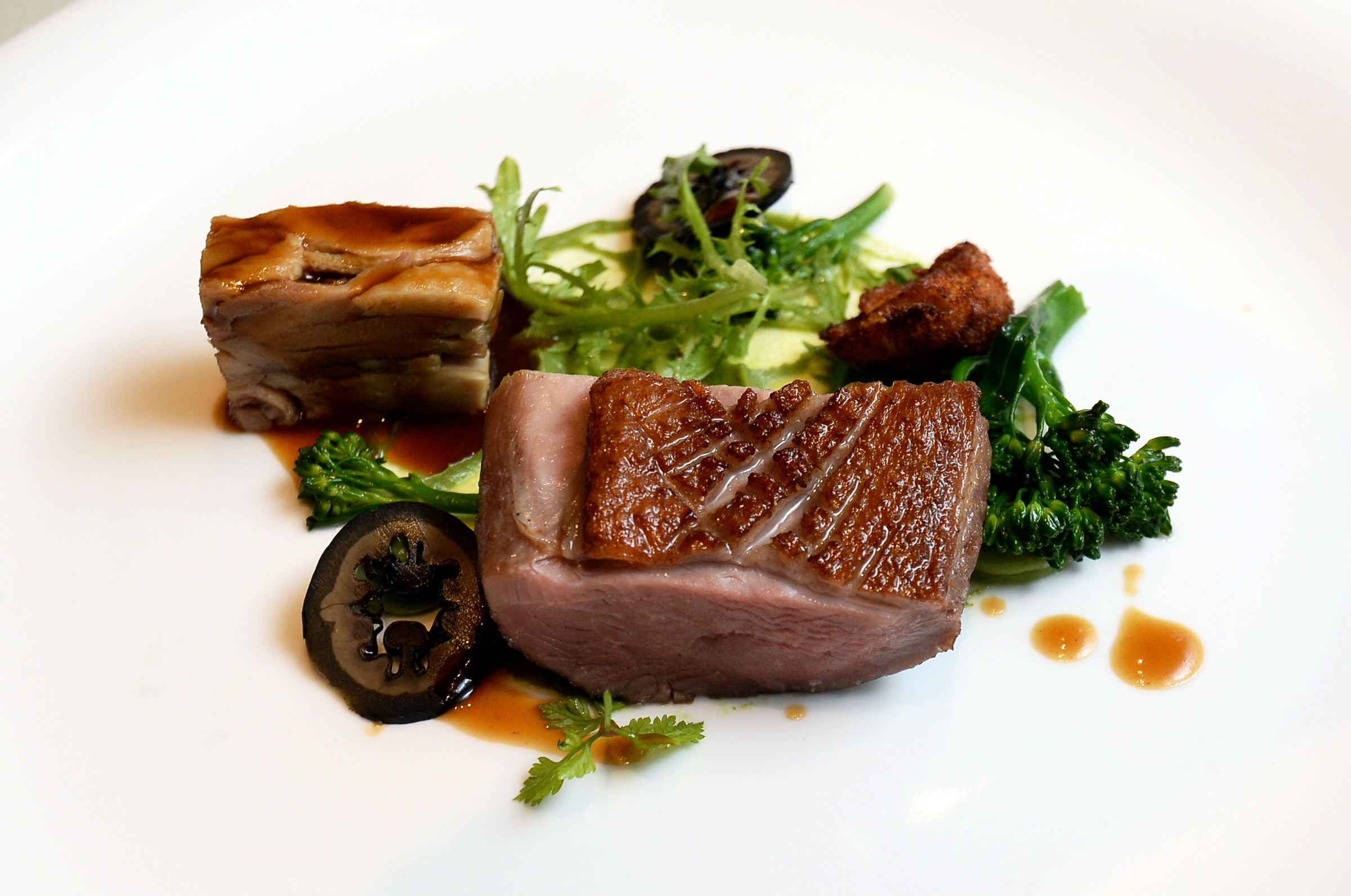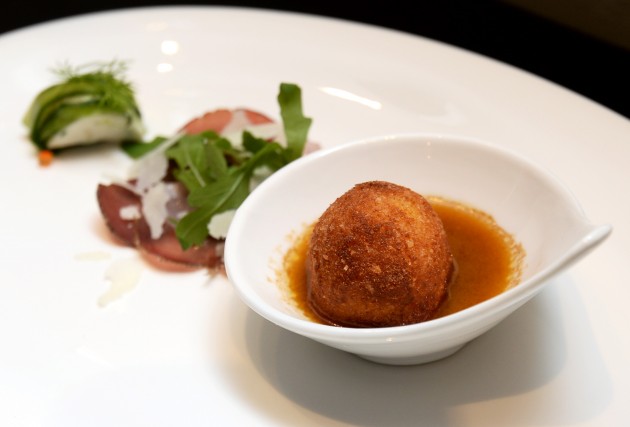THE RESTAURANT
The Club Saujana Resort,
Jalan Lapangan Terbang Saas,
41050 Selangor.
(Pork-free)
Tel: 03-7843 1234
Business hours: 6.30am to 11pm daily.
BRINGING the taste of Austria to our plates at The Restaurant in The Club Saujana Resort is none other than visiting chef Gottfried Prantl.
The award-winning Austrian chef excited the palates of his diners recently by presenting them with upscale cuisine and carefully selected wines from Austria.
“I brought in almost 90% of the ingredients from Austria to ensure only the finest food is served,” he said.
Having trained in a culinary school and majored in a fusion of French, Italian and Austrain cuisine, Gottfried successfully showcased his skills in the food he plated.
One dish which left only pleasant memories on our taste buds was the first dish, comprising Polenta — Venison Praline, dry-aged beef and smoked trout served with Kremstal dac Gottweiger Berg 2013, Gruner Veltliner white wine.
The polenta was shaped in a crumbed ball and looked like it had been fried, but proved to be soft when cut into.
A bite of it and lovers of caramel will be in sweet heaven, like having sweet venison.
Next was the Free Range Duck Served Cold and Warm (top pic), which made us curious about how cold duck would taste.
To our surprise, both the cold and warm duck was tender and juicy, full of duck flavour despite the drizzle of brown sauce topped with wild broccoli and cep mushrooms.
This was served with the white Paul Achs 2012, Pinot Noir wine.
“We had to fine-tune it a little to suit the Malaysian palate, as I’ve learnt that they don’t take too much salt in their food.
“I’ve also learnt that for them spicy is chilli spicy but for Europeans spicy would mean pepper and that’s it,” he said with a laugh.
Cooking together with The Restaurant’s head chef Alexander Walsh, both Austrian chefs worked together to present their country’s food and its significant flavours.
Having cooked all over the world such as America, France and Switzerland, Prantl added that the wines brought in from Austria cannot be bought here.
He explained that the wines were all from local family businesses in Austria and they are of the finest quality.
Next up was the Salmon Trout, served with the Austrian Lovage, beet root and celeriac.
“Lovage is an Austrian herb and it is now in season. We use a lot of that in our cooking,” he said.
The salmon trout meat was sweet and complemented the lovage, beet root and celeriac.
This dish was washed down with the Rittstever Lehmgruber 2011, Chardonay.
The Austrian style ravioli stuffed with Alp cheese Beurre Noisette was also served.
Non-cheese lovers might find this a little too cheesy and rich but the smell of cheese is not pungent but fragrant.
To add to the flavour of the cheese and homemade ravioli, a glass of Kollwentz Tatschler 2012 Chardonay was served.
The ravioli was really fresh and soft, and the cheese stuffing went really well with the wine.
Then came the Medium Roasted Lamb saddle and Slow Braised Neck served with assorted beans and potato goulash.
Having never really eaten the neck of lamb before, what we tasted was really juicy and tender.
Cooked to medium rare, the meat was full of flavour and best eaten together with the potato goulash and beans.
The lamb was suitable for those who love the taste of the meat but not the smell.
This dish was served with the red Marco Polo 2009, Syrah Merlot Cabernet.
To end the meal with a bang, two desserts were served, one a souffle and the other a sorbet.
The chocolate souffle tasted like it was made from dark chocolate, which actually went really well with the sweet wine served.
Known also as Ice Wine, the Ruster Ausbruch 2008 Pinot Cuvee is a sweet dessert wine which only contains natural sugar.
Harvested only during the winter season, it is believed that the grapes harvested then has the most amount of sugar in it.
This then makes the wine sweet and a perfect complement to the desserts, either sour like the sorbet or bitter like the dark chocolate.
This is the writer’s personal observation and is not an endorsement by StarMetro.







